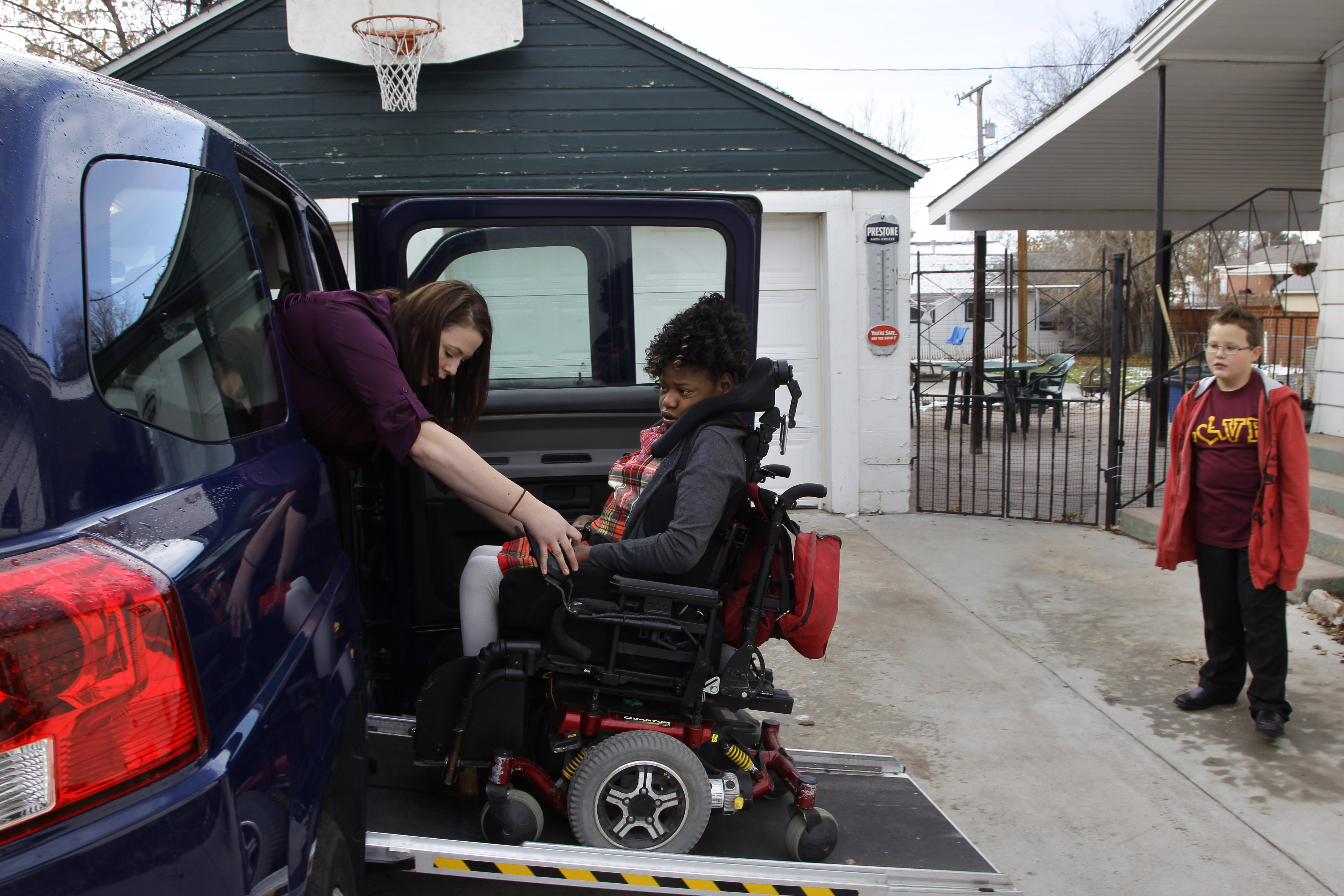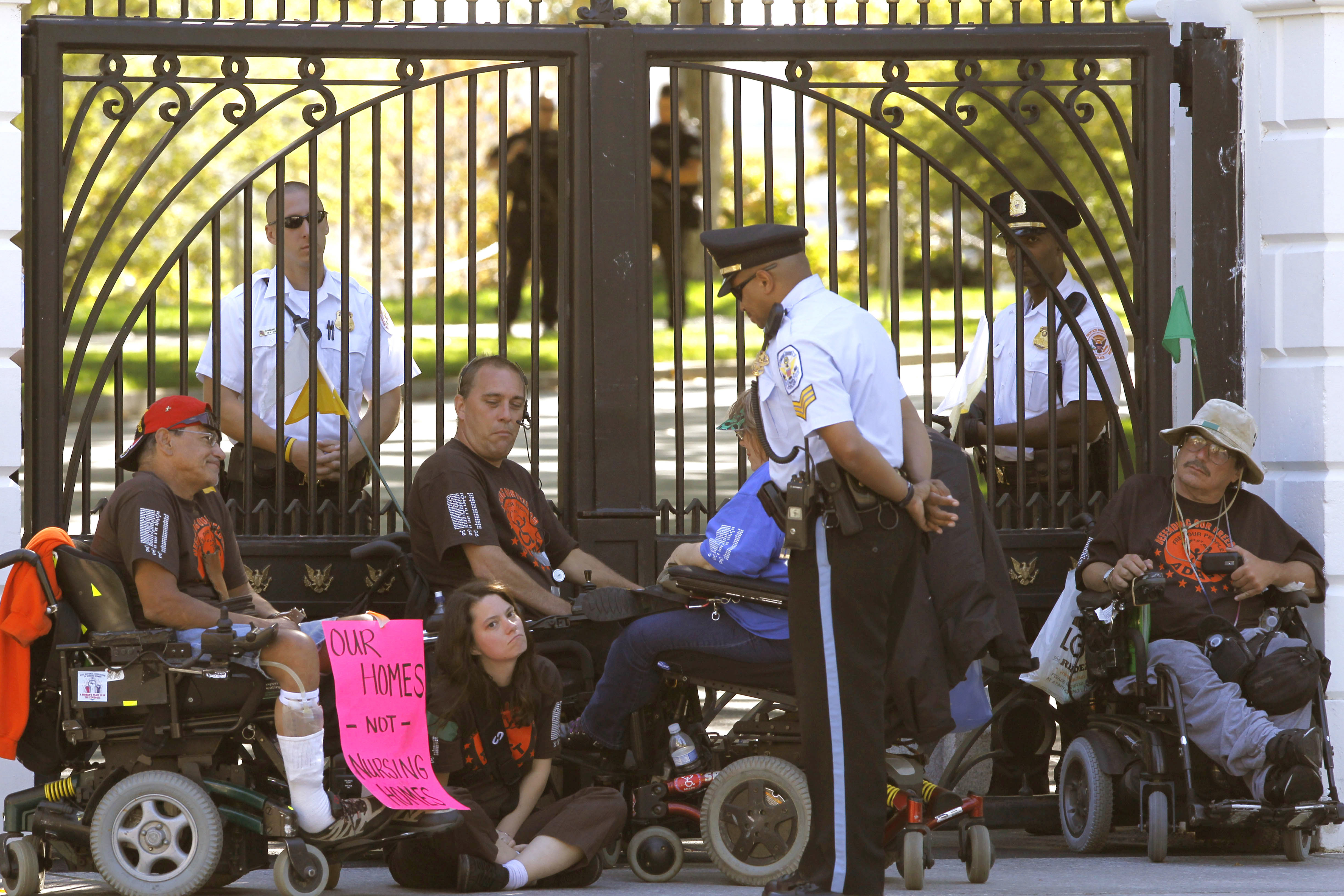Throughout this month, the disability community and its allies are celebrating the 25th Anniversary of the Americans with Disabilities Act (ADA). As a second-generation person with a disability, I had the good fortune of literally being born into the disability rights movement. My father ran a Center for Independent Living, and my mother—who was denied tenure early in her teaching career because she could only reach the bottom six inches of a chalkboard—worked in Disability Student Services. Today, my husband and I are raising two children with disabilities.
Here’s the question the disability community and the next generation now face: We got the ADA 25 years ago, so what’s next? The answer you get depends greatly on whom you ask. My answer is likely a bit untraditional: we must protect the civil rights of parents with disabilities.
In 2012, the National Council on Disability released “Rocking the Cradle: Protecting the Civil Rights of Parents with Disabilities.” The report examined the disparate treatment of parents with disabilities in matters of child custody, foster care, adoption, and family law. Right now in 37 states parents with disabilities can have their custodial rights terminated on the basis of having a disability. Additional rights to be an adoptive or foster parent, to have access to reproductive technology, and to be treated fairly in the eyes of the child welfare and family court system are also impacted by discrimination on the basis of a parent’s disability.
“She’s blind, how will she ever read a thermometer to see if her child has a temperature?” “He uses a wheelchair, how will he ever play baseball with his son?” Statements such as these are actual reasons that children have been stripped away from loving homes, according to the testimonies of Carrie Ann Lucas and Kelly Buckland at last week’s quarterly meeting of the National Council on Disability. Lucas is one of only four attorneys in the nation who work on these kinds of cases, and Buckland—the Executive Director of the National Council on Independent Living—wrote the first laws to protect civil rights of parents with disabilities in Idaho.
The bias against parents with disabilities is well embedded in the history of the United States. During the first half of the 20th century, the eugenics movement led to more than 30 states passing legislation that permitted the involuntary sterilization of people with disabilities. This legislative trend was based on the belief that people with disabilities and other “socially inadequate” populations would produce offspring who would be a burden on society. The Supreme Court subsequently endorsed this policy, and by 1970 more than 65,000 Americans had been involuntarily sterilized. Even today, 25 years after the passage of the ADA, several states still have some form of involuntary sterilization law on their books.
Parents with disabilities are the only distinct community of Americans who must struggle to retain custody of their children. As we found in Rocking the Cradle, removal rates when parents have a psychiatric disability have been found to be as high as 70 to 80 percent; when the parent has an intellectual disability, 40 to 80 percent. In families in which the parental disability is physical, 13 percent have reported discriminatory treatment in custody cases. Parents who are deaf or blind report extremely high rates of child removal and loss of parental rights. Parents with disabilities are more likely to lose custody of their children after divorce, have more difficulty accessing reproductive health care, and face significant barriers to adopting children.
Parents with disabilities and their children are disproportionately—and often inappropriately— referred to child welfare services. Once involved in the child welfare system, these families are permanently separated at disproportionately high rates for a number of reasons, including: inclusion of disability as grounds for termination of parental rights (TPR) in many state statutes; the disparate impact of certain provisions of the Adoption and Safe Families Act of 1997 (ASFA); perceived limits on the application of the Americans with Disabilities Act (ADA), especially at the termination phase; bias, speculation, and the “unfit parent” standard; and a lack of training in relevant systems regarding parents with disabilities.
People with disabilities also face significant barriers, and even outright discrimination, that can prevent them from accessing reproductive technology that can enable a person to become a parent, such as assisted reproductive technology (ART). ART providers regularly discriminate against people with disabilities. Additionally, the growing costs of ART, combined with the limited insurance coverage for these treatments, leave many people with disabilities unable to afford the treatment. Half of all women with disabilities are covered by Medicaid and existing federal law allows states to refuse coverage for fertility drugs (but not Viagra.) These discriminatory policies and practices impact all demographics in the disability community including disabled service men and women. For example, in May of this year the Washington Post reported on Holly and Alex Dillmann who were denied access to in vitro fertilization (IVF) via their Veterans Affairs health plan, which up until this year banned the procedure. Their case is just the tip of the iceberg.
Get Talk Poverty In Your Inbox
Recent guidance from the Departments of Justice and Health and Human Services reiterating these agencies’ legal obligations pursuant to the ADA is an extremely positive development. However, further action is needed at the federal, state, and local levels to give parents with disabilities a level playing field:
- Congress, the Administration, and federal agencies should fund research on parents with disabilities and their families.
- States should eliminate disability from their statutes as grounds for termination of parental rights and enact legislation that ensures the rights of parents with disabilities.
- Congress should address the disparate treatment experienced by parents with disabilities by adding specific protections in the Adoption and Safe Families Act.
- Congress should shift funding priorities at the federal level so that states have a greater incentive to provide services to families while the children are maintained in the home, as research has shown that in-home services are most effective, particularly for people with disabilities.
- HHS and DOJ should collect annual data on parents with disabilities and their interaction with child welfare agencies and dependency courts; and DOJ should include such matters in its enforcement priorities and consider violations of parental rights to be violations of civil rights.
- The HHS Children’s Bureau should collaborate with the National Institute on Disability and Rehabilitation Research (NIDRR) in funding and directing the Institute’s National Center for Parents with Disabilities and Their Families.
Despite a dark history marked by the eugenics movement, increasing numbers of people with disabilities are choosing to become parents. My husband and I knew there was a 50% chance that our children would have dwarfism, and that made the idea of parenthood even more attractive, as we perceive dwarfism as part of our family’s culture. The right to parent without interference is protected by the U.S. Constitution. A child should only be taken from a custodial parent when the disability creates a situation that cannot be alleviated or accommodated.
I dream of a day when removal of a child from a parent with a disability is a rarity, so that in another 25 years the 4 million-plus parents with disabilities will be celebrating the ADA’s 50th Anniversary as grandparents.


















